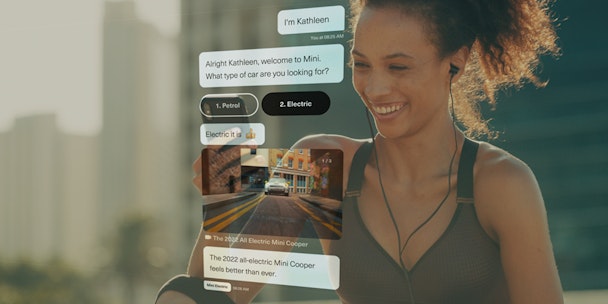Write like you talk: What conversational content looks like for creators
Every communications professional will most certainly agree on one thing: storytelling remains the essential element when building a brand, growing an audience, acquiring influence, motivating a team and so on. But with a TikTok revolution underway, conventional content formats, such as this article, are slowly going out of fashion. Consumers are now unconsciously seeking more frequent and rewarding experiences and are rarely committed to going further than a few paragraphs into a long story. Are you still reading this? That’s a relief.

It's time that we switch on our conversational superpowers with Public
A 2022 Chartbeat study reveals that the average engaged time spent with traditional media now averages less than 30 seconds, all while video isn’t doing a lot better, as younger audiences overwhelmingly favor the under 15 second formats.
So here’s an uncommon idea: write like you talk. Switch-on your conversational superpowers. Cross out some rules, surprise your audience, build your own playbook. Like this hypothetical debriefing between two undisclosed media professionals.
Name? Conversational Content.
What is it? An interactive content format created on a messaging interface.
Fascinating. Who cares? Presumably the 3 billion people who are using messaging apps for 82 minutes per day.
So it’s like a chatbot, but not all that terrible? You’re being difficult.
Enlighten me. Conversational Content uses most of the features of spoken language, while driving a new dynamic into conventional storylines. Experiences then branch out into new chapters based on the choices the user is making along the way. Chat bots on the other hand are more utilitarian, using machine learning to try to fit users on predetermined profiles and then speed them up into conversion funnels. Or worse, if growing up on Twitter.
Excellent. Is that a new app then? No, conversational stories are standalone web articles. Unlike regular articles, they include not only media but also interactive components, input fields, e-commerce modules and so on – something of a choose-your-own adventure that picks up your preferences all while the action unfolds.
Isn’t there a Netflix show that does that? A few, in fact. The viewer can make choices that determine the character’s actions and the plot’s outcome.
Isn’t that what life is like? Pretty unoriginal, indeed.
Is this supposed to be funny? Preferably. But no.
Rewarding? Very rewarding, according to science, as we’re wired to get tiny dopamine hits for all successful social interactions and sense-making duties we put our minds to. And dopamine is the Mario-style gold coin we all pursue in life these days.
Great. So spending time on the internet now counts as social interaction? Curiously, it does if the experience is created as a two-way conversation.
Like that guy who’s interviewing a sock on his show? No, not that guy. But more like this thing we have here.
So you mean this is a conversation? It feels like one, doesn’t it? Speeding through bite-size content frees up more neurotransmitters, while information sets in more naturally. Complex sentences, on the other hand, cause something called negative prediction errors, which quickly encourage us to disengage.
You lost me on this last one. Shall we just switch back to TikTok now? Erm, no. But conversational content does fill that gap, as users are expecting more compelling, real-time, fast-paced experiences that look alot more like their daily habits.
So we get to write like we talk now? To a degree, yes. Written language is more distant and formal, which makes it more difficult to read, allowing people’s attention to drift. So, thankfully, a good number of rules are going out of style. Never end a sentence with a preposition? Gone. Split an infinitive? Knock yourself out!
Even if I’m a marketer? Even more so if you’re a marketer. Consumers like things in plain English. Or French. Or Italian. You get the point.
But that’s not how marketing works. Indeed. You can’t be taken seriously in your organization if you suggest that the bulk of consumer behavior is, in fact, perfectly obvious. So we gave this thing a respectable name.
Which thing is that again? Conversational Content.
Right, that works. So is this a thing now? Publishers like The New York Times, Quartz and The Guardian have created their own flavors of conversational media. So it’s been a thing for some time now.
But not marketers. No, Linkedin has a fairly robust Conversational Ads product, while many others are catching on. Like Public, the people that have paid for this story to be created.
Bollocks, so this was paid for? I’m afraid so.
Alright, off to TikTok. So long.
Content by The Drum Network member:

Public
Public helps marketers turn virtually any idea into a conversational content experience. For more information, please visit www.getpublic.com
Find out more
